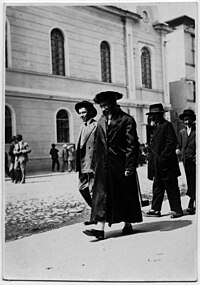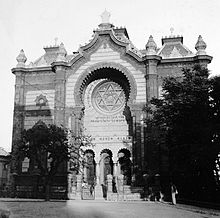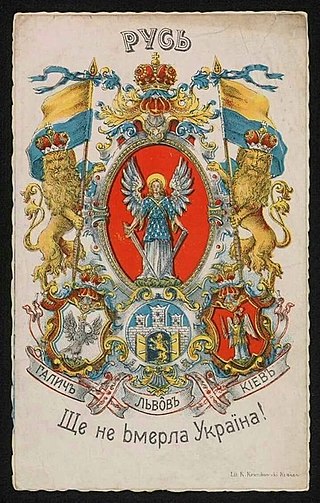
Ruthenia is an exonym, originally used in Medieval Latin as one of several terms for Kievan Rus', the Kingdom of Galicia-Volhynia and, after their collapse, for East Slavic and Eastern Orthodox regions of the Grand Duchy of Lithuania and the Kingdom of Poland, corresponding to what is now Ukraine and Belarus.
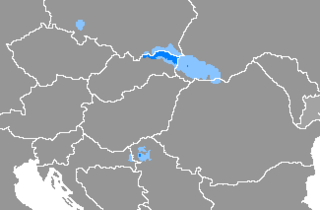
Rusyn is an East Slavic language spoken by Rusyns in parts of Central and Eastern Europe, and written in the Cyrillic script. Within the community, the language is also referred to by the older folk term, руснацькый язык, rusnac'kyj jazyk, 'Rusnak language', or simply referred to as speaking our way. The majority of speakers live in an area known as Carpathian Ruthenia that spans from Transcarpathia, westward into eastern Slovakia and south-east Poland. There is also a sizeable Pannonian Rusyn linguistic island in Vojvodina, Serbia, as well as a Rusyn diaspora throughout the world. Per the European Charter for Regional or Minority Languages, Rusyn is officially recognized as a protected minority language by Bosnia and Herzegovina, Croatia, Hungary, Romania, Poland, Serbia, and Slovakia.

Ruthenian and Ruthene are exonyms of Latin origin, formerly used in Eastern and Central Europe as common ethnonyms for East Slavs, particularly during the late medieval and early modern periods. The Latin term Rutheni was used in medieval sources to describe all Eastern Slavs of the Grand Duchy of Lithuania, as an exonym for people of the former Kievan Rus', thus including ancestors of the modern Belarusians, Rusyns and Ukrainians. The use of Ruthenian and related exonyms continued through the early modern period, developing several distinctive meanings, both in terms of their regional scopes and additional religious connotations.

Carpathian Ruthenia is a historical region on the border between Central and Eastern Europe, mostly located in western Ukraine's Zakarpattia Oblast, with smaller parts in eastern Slovakia and the Lemko Region in Poland.

Carpatho-Ukraine or Carpathian Ukraine was an autonomous region within the Second Czechoslovak Republic, created in December 1938 by renaming Subcarpathian Rus' whose full administrative and political autonomy was confirmed by the Constitutional law of 22 November 1938. 20 years earlier, the region which had historically belonged to Hungary, was detached from Kingdom of Hungary and attached to the newly created Czechoslovakia by the Treaty of Trianon in 1920, and Hungary had sought a nonviolent way to restore its historical borders and the revision of the Treaty of Trianon. On 2 November 1938, the First Vienna Award separated territories from Czechoslovakia, including the southern Carpathian Rus' that were mostly Hungarian-populated and returned them to Hungary. After the breakup of the Second Czechoslovak Republic, Carpatho-Ukraine proclaimed an independent republic on 15 March 1939, headed by president Avgustyn Voloshyn, who appealed to Hitler for recognition and support. Nazi Germany did not reply, and the short-lived state was invaded by the Kingdom of Hungary, crushing all local resistance by 18 March 1939.

Zakarpattia Oblast, also referred to as simply Zakarpattia, is an oblast in western Ukraine, mostly coterminous with the historical region of Carpathian Ruthenia. Its administrative centre is the city of Uzhhorod, Other major cities within the oblast include Mukachevo, Khust, Berehove, and Chop, the last of which is home to railroad transport infrastructure.

Uzhhorod is a city and municipality on the Uzh River in western Ukraine, at the border with Slovakia and near the border with Hungary. The city is approximately equidistant from the Baltic, the Adriatic and the Black Sea making it the most inland city in this part of Europe. It is the administrative center of Zakarpattia Oblast (region), as well as the administrative center of Uzhhorod Raion (district) within the oblast. Population: 115,449.
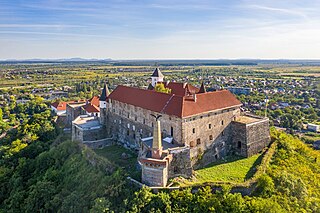
Mukachevo is a city in the valley of the Latorica river in Zakarpattia Oblast (province), in Western Ukraine. Serving as the administrative center of Mukachevo Raion (district), the city itself does not belong to the raion and is designated as a city of oblast significance, with the status equal to that of a separate raion. The city is a rail terminus and highway junction, and has beer, wine, tobacco, food, textile, timber, and furniture industries. During the Cold War, it was home to Mukachevo air base and a radar station.

Rusyns, also known as Carpatho-Rusyns, or Rusnaks, are an East Slavic ethnic group from the Eastern Carpathians in Central Europe. They speak Rusyn, an East Slavic language variety, treated variously as either a distinct language or a dialect of the Ukrainian language. As traditional adherents of Eastern Christianity, the majority of Rusyns are Eastern Catholics, though a minority of Rusyns still practice Eastern Orthodoxy. Rusyns primarily self-identify as a distinct Slavic people and they are recognized as such in Croatia, Hungary, Poland, Romania, Serbia, and Slovakia, where they have official minority status. Alternatively, some identify more closely with their country of residence, while others are a branch of the Ukrainian people.

The Rt Rev. Avgustyn Ivanovych Monsignor Voloshyn , also known as Augustin Voloshyn, was a Carpatho-Ukrainian politician, teacher, essayist, and Greek Catholic priest of the Mukacheve eparchy in Czechoslovakia.

Khust is a city located on the Khustets River in Zakarpattia Oblast, western Ukraine. It is near the сonfluence of the Tisa and Rika Rivers. It serves as the administrative center of Khust Raion. Population: 28,039.
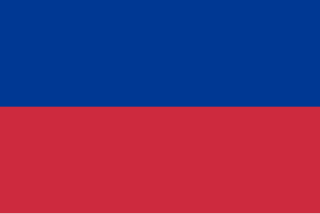
Carpathian Ruthenia was a region in the easternmost part of Czechoslovakia that became an autonomous region within that country in September 1938. It declared its independence as the "Republic of Carpatho-Ukraine” in 15 March 1939, however being occupied and annexed by Hungary the same day. Starting with October 1944, the Soviet Red Army occupied the territory and short period the territory of the region was organised as Transcarpathian Ukraine (1944—1946), until it was incorporated into the Ukrainian Soviet Socialist Republic in 1946. In total between 1939 and 1944 80,000 Carpathian Ukrainians perished.

The history of the Jews in the Czech lands, historically the Lands of the Bohemian Crown, including the modern Czech Republic, goes back many centuries. There is evidence that Jews have lived in Moravia and Bohemia since as early as the 10th century. Jewish communities flourished here specifically in the 16 and 17th centuries, and again in the late 19th and early 20th centuries. Local Jews were mostly murdered in the Holocaust, or exiled at various points. As of 2021, there were only approximately 2,300 Jews estimated to be living in the Czech Republic.
Rusyn Americans are citizens of the United States of America, with ancestors who were Rusyns, from Carpathian Ruthenia, or neighboring areas of Central Europe. However, some Rusyn Americans, also or instead identify as Ukrainian Americans, Russian Americans, or even Slovak Americans.

Gregory Ignatius Zhatkovich was an American lawyer and political activist for Rusyns in the United States and Europe.
Livia Rothkirchen was a Czechoslovak-born Israeli historian and archivist. She was the author of several books about the Holocaust, including The Destruction of Slovak Jewry (1961), the first authoritative description of the deportation and murder of the Jews of Slovakia.

The coat of arms of Carpatho-Ukraine is the official heraldic coat of arms of Zakarpattia Oblast in Ukraine. The coat of arms was initially adopted on 30 March 1920 along with coat of arms of other lands of Czechoslovakia. The Ukrainian version of the arms was adopted on 18 December 1990 as a revived coat of arms by Hungarian graphic artist Janos Reiti.

Elections for deputies to the Czechoslovak parliament from the Užhorod electoral district were held on 16 March 1924. Nine members of the Chamber of Deputies and four senators were elected.
Carpatho-Ruthenians or Carpathian Ruthenians may refer to:

The Soviet annexation of Transcarpathia was the cession of Carpathian Ruthenia (Transcarpathia), which belonged to Czechoslovakia, to the Soviet Union in the years 1945–46.
